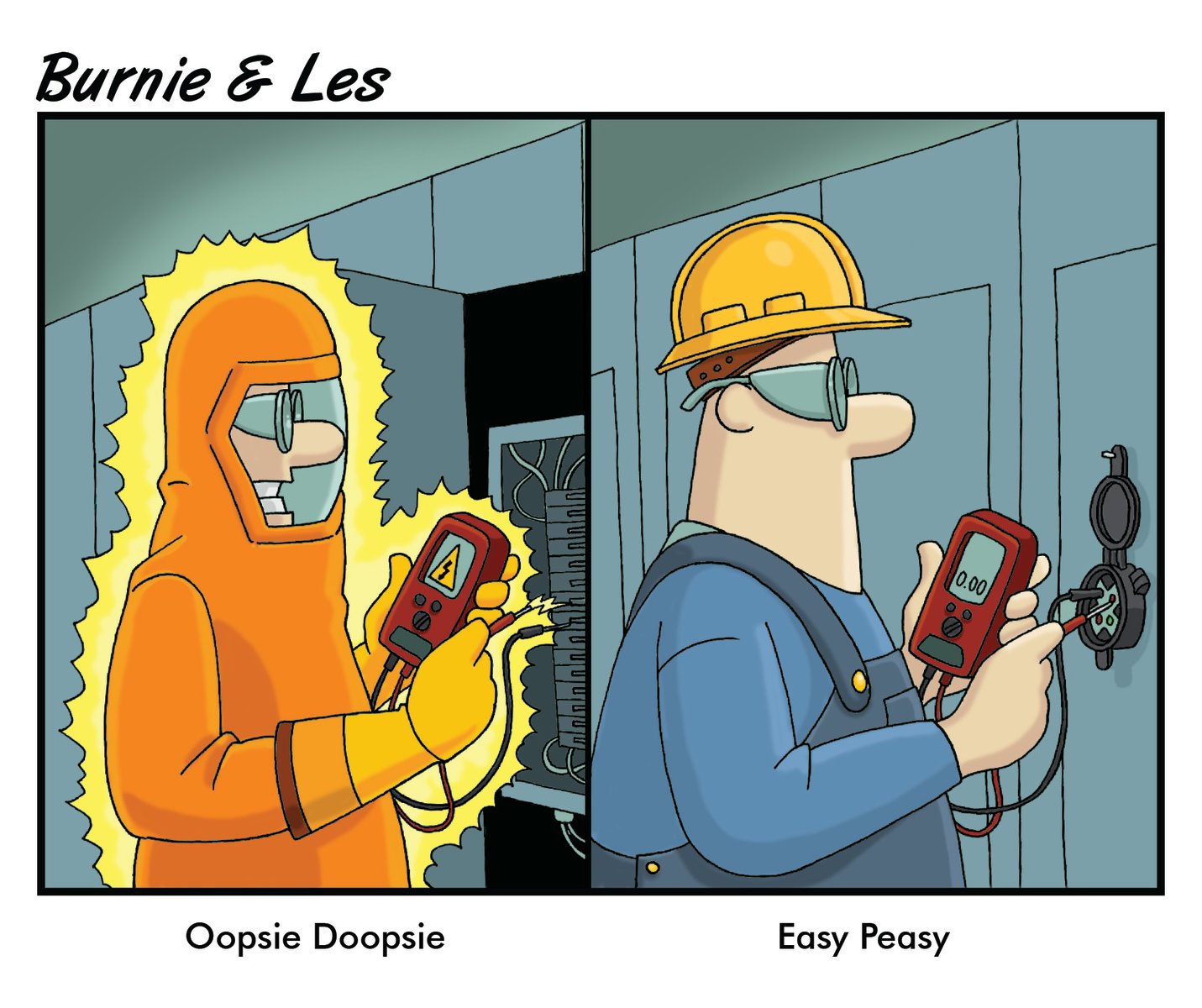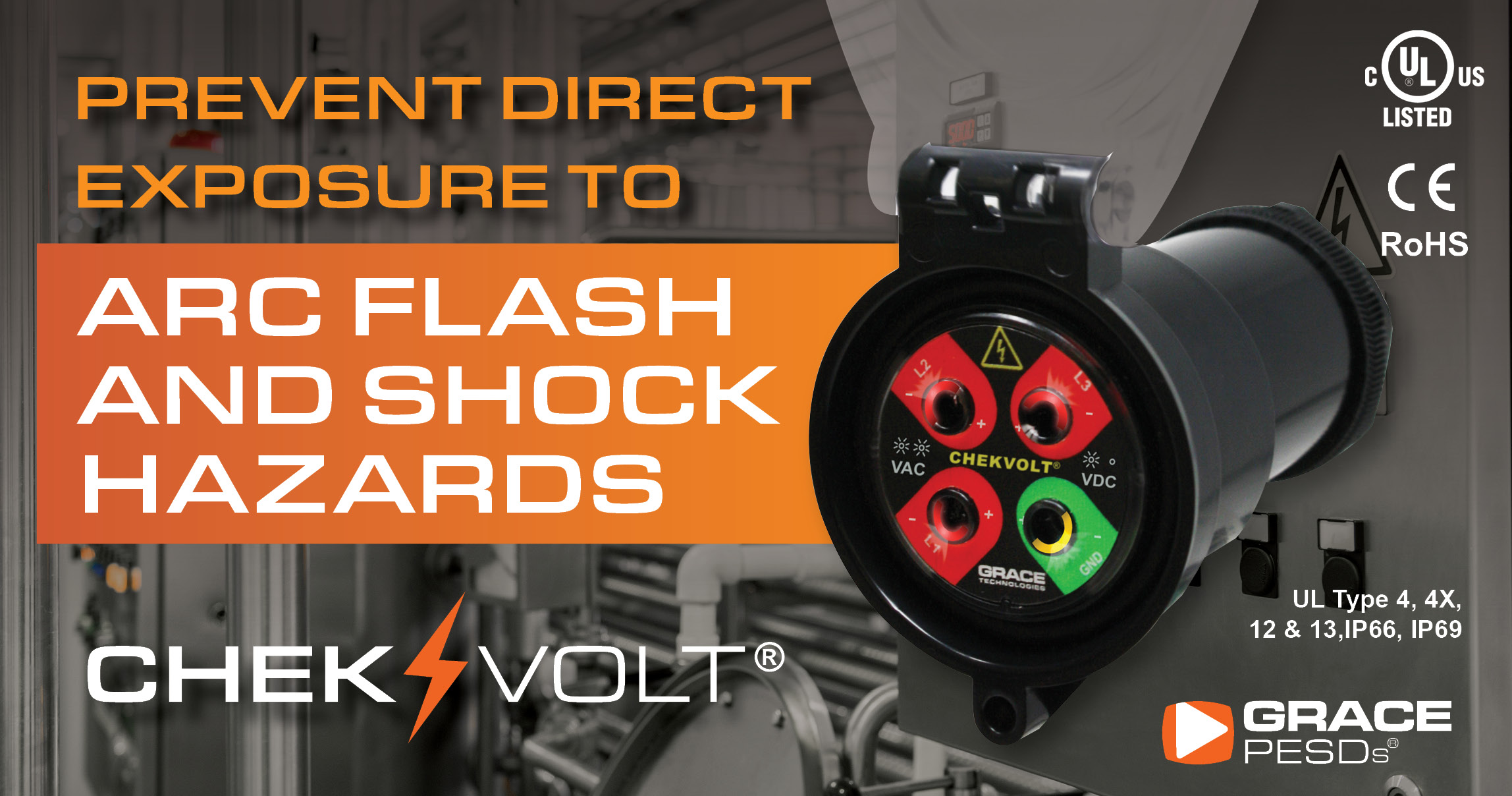Understanding Arc Flash
An arc flash is a dangerous release of energy caused by an electrical fault, potentially occurring in any electrical system with sufficient energy. This phenomenon happens when there is a sudden discharge of electricity through the air, initiated by a phase-to-ground or phase-to-phase fault.
This discharge can generate temperatures as high as 35,000 degrees Fahrenheit, which is hotter than the surface of the sun. The intense heat from an arc flash can vaporize metal, send out deadly shrapnel, and cause severe injuries or fatalities to anyone in its vicinity.
The Dangers of Arc Flash
These dangers underscore the critical importance of proper safety measures, including protective gear, rigorous adherence to safety protocols, and adequate training for all personnel working around electrical equipment. The immediate dangers of arc flash include:
- Severe Burns: Arc flashes generate temperatures that can reach as high as 35,000 degrees Fahrenheit, which is capable of causing third-degree burns and even proving fatal if the victim is close to the flash point.
- Flying Debris: The explosive force of an arc flash can hurl tools, metal parts, and other materials through the air, turning them into potentially lethal projectiles.
- Blinding Light: The intense light emitted by an arc flash can cause temporary vision loss, which might lead to accidents, further compounding the danger.
- Hearing Damage: The sudden, loud blast produced by an arc flash can result in immediate and permanent hearing loss or damage.
- Pressure Wave: An arc flash can create a powerful pressure wave capable of knocking workers off their feet or causing structural damage to facilities, which can lead to further injuries or fatalities.
- Electrical Shock: While the focus is often on burns and blasts, the electrical current itself poses a significant risk. Contact with the electrical arc can lead to electrocution or other electrical shock injuries.
- Fatalities: The combination of high temperatures, explosive forces, and other hazardous conditions can lead to fatal injuries for those involved. The risk of fatality increases with the energy level of the arc flash and the proximity of the person to the flash point.
Arc Flash Incidents
Arc flash incidents in the United States are significant concerns that have been extensively studied to improve safety and prevent accidents.
- Frequency and Impact: Arc flashes are among the most common electrical hazards in industrial environments. The Electrical Safety Foundation International (ESFI) reports that thousands of workers are sent to burn centers each year due to arc flash injuries. However, exact numbers can fluctuate based on reporting standards and industry practices.
- Severity: According to the National Fire Protection Association (NFPA), arc flash incidents can result in severe injuries and are a leading cause of electrical injuries in the workplace. Fatalities are also a significant risk, depending on the energy released during the arc flash.
Causes of Arc Flashes
Arc flashes can occur under a variety of scenarios during maintenance activities, particularly when safety protocols like Lockout/Tagout (LOTO) are not adequately implemented. Here are some common scenarios where arc flash hazards may arise during maintenance:
- Failure to Implement LOTO: LOTO procedures are critical for ensuring that electrical equipment is properly de-energized before maintenance begins. Arc flashes often occur when workers assume equipment has been de-energized without verifying, or when they bypass LOTO procedures altogether.
- Working on Live Equipment: Sometimes, maintenance must be performed on equipment that is energized. This significantly increases the risk of arc flash, especially if the appropriate precautions, tools, and personal protective equipment (PPE) are not used.
- Accidental Contact: During maintenance, tools or body parts may accidentally come into contact with live parts due to human error or inadequate workspace. Such contact can create a path for electrical current, leading to an arc flash.
- Improper Use of Tools and Equipment: Using non-insulated tools or tools that are damaged can lead to short circuits, sparking an arc flash. Similarly, using equipment that is not rated for the voltage of the system being worked on can also lead to accidents.
- Equipment Faults: Defective, aged, or poorly maintained equipment can fail under normal operating conditions or during testing and maintenance, leading to an arc flash. This includes failure of insulation, conductive dust build-up, or mechanical failures.
- Lack of Adequate Training: Inadequate training on the hazards associated with specific equipment or failure to understand the importance of following safety procedures can lead to mistakes that cause arc flashes.
Why Electrical Safety Is Critical in the Workplace
Implementing comprehensive safety measures, ongoing employee training, regular equipment inspections, and adherence to safety standards are all essential strategies for maintaining electrical safety in the workplace. These practices not only protect individuals but also support the overall health and sustainability of a business. Electrical safety is critical in the workplace for several compelling reasons:
- Prevention of Fatalities and Injuries: Electricity can cause severe injuries such as burns, shocks, and even fatalities. Maintaining high standards of electrical safety helps to prevent these severe outcomes. For instance, arc flashes—a sudden, explosive electrical discharge—can result in devastating burns or fatalities. Ensuring safety measures are in place reduces the risk of such dangerous incidents.
- Legal Compliance: Workplaces are required by law to adhere to safety standards, such as those outlined by the Occupational Safety and Health Administration (OSHA) in the United States or similar regulatory bodies worldwide. These regulations are designed to protect workers from potential harm and prevent workplace accidents. Failure to comply can result in legal repercussions for businesses, including fines and sanctions.
- Reduction of Economic Losses: Electrical accidents can cause significant economic losses due to downtime, equipment damage, compensation claims, and increased insurance premiums. By investing in electrical safety, companies can avoid costly disruptions and protect their assets.
- Preservation of Workforce Health and Productivity: Protecting employees from electrical hazards contributes to a healthier workforce, reducing absenteeism due to injuries. A safe working environment also boosts morale and productivity as employees feel secure at their workplace.
- Reputation Management: A strong commitment to safety enhances a company's reputation among clients, investors, and potential employees. Conversely, a history of safety violations can tarnish a company's image and impact its success.
- Business Continuity: Electrical accidents can halt production lines, cause data loss, or damage critical infrastructure. Effective electrical safety practices help ensure continuous business operations and reduce the risk of unplanned outages.

Enhancing Electrical Safety with PESDs
After understanding the risks associated with arc flash and the importance of electrical safety, it’s clear that additional measures are necessary. One effective way to enhance safety is by implementing Permanent Electrical Safety Devices (PESDs).
PESDs are devices designed to improve electrical safety by providing a visual and physical barrier to electrical hazards. They are used to verify the absence of voltage from outside the electrical panel, which significantly reduces the risk of exposure to arc flash and electrocution.
Benefits of PESDs in the Workplace
- Enhanced Safety: PESDs allow for safer interactions with electrical systems by ensuring equipment is properly de-energized before maintenance begins.
- Compliance: PESDs help organizations comply with NFPA 70E standards, which require testing for the absence of voltage.
- Efficiency: With PESDs, technicians can quickly and safely verify power statuses without opening panels or donning extensive personal protective equipment (PPE).
- Cost-Effective: By reducing the risk of accidents, PESDs help avoid costly medical expenses, legal fees, and equipment damages.

Arc flash is a severe hazard that poses significant risks in the workplace. Understanding what it is and why electrical safety is crucial can help prevent these dangerous incidents. By incorporating advanced safety solutions like PESDs, businesses can protect their workforce, reduce operational risks, and ensure compliance with safety regulations.
If your organization has not adopted these practices, consider integrating PESDs into your electrical safety protocol to create a safer and more compliant workplace.

